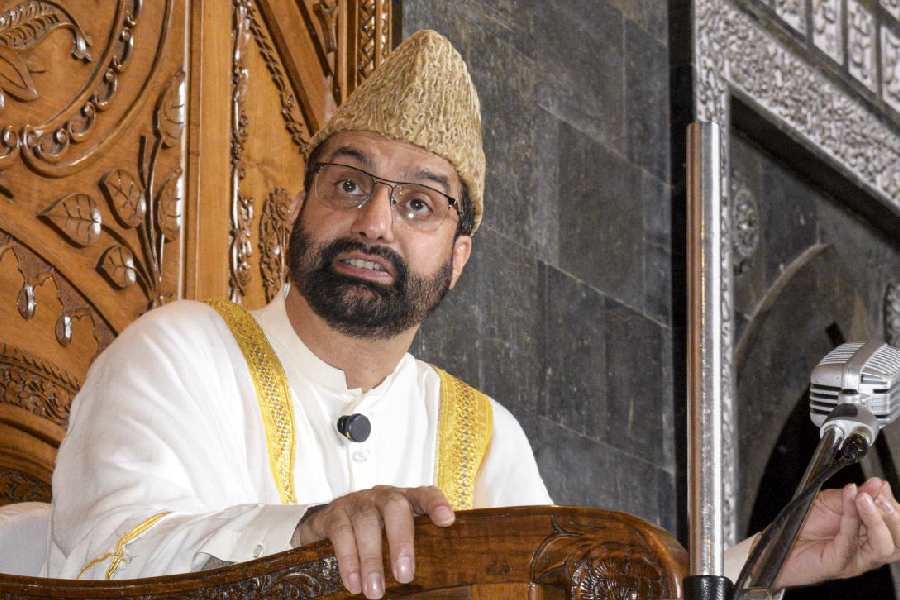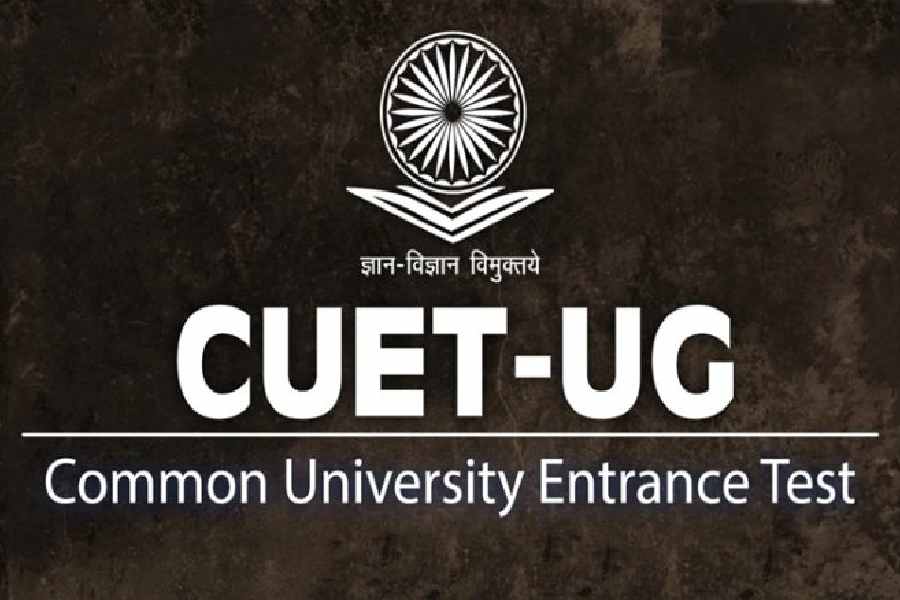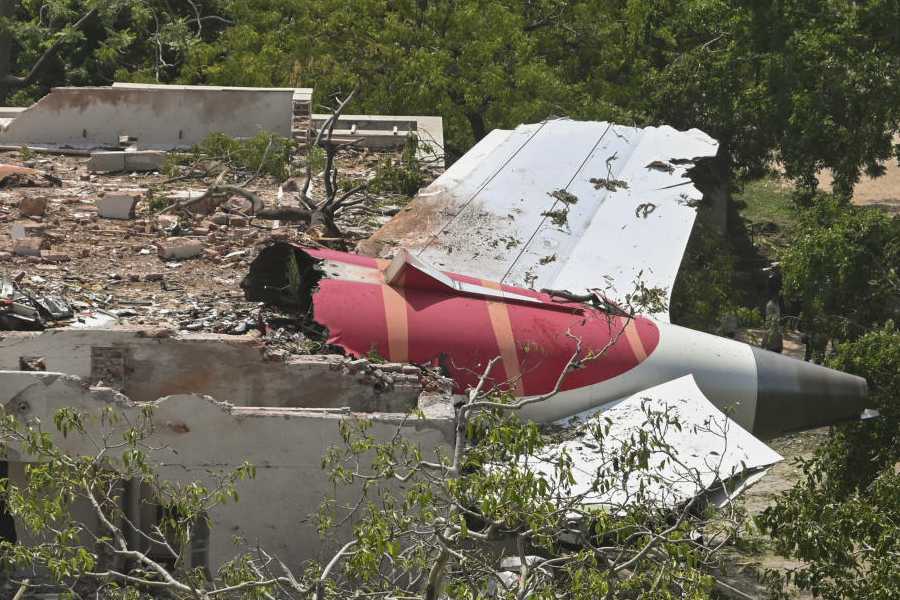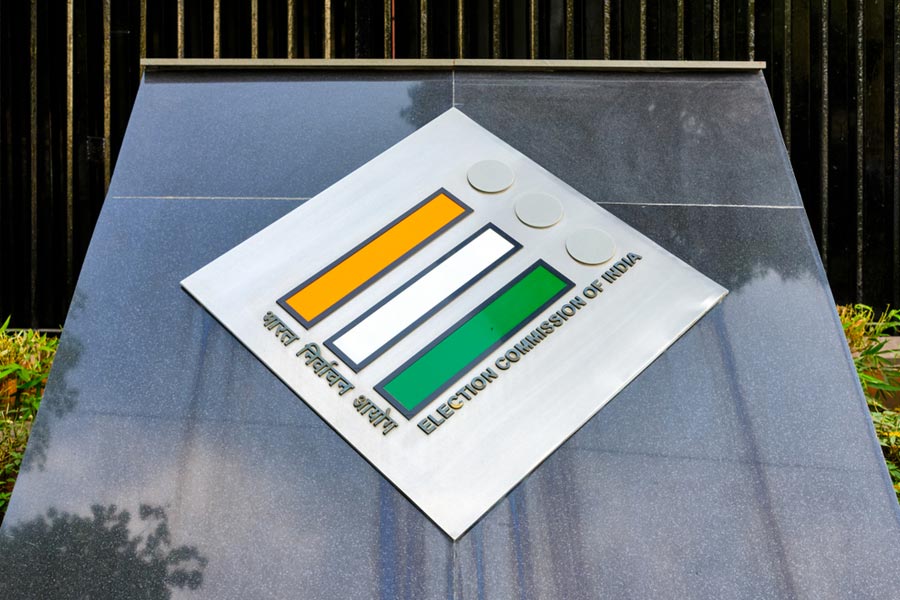 |
| Family members with a photograph of Raghuveer, who was killed in the accident, outside the Osmania Hospital mortuary in Hyderabad on Thursday. (PTI) |
Oct. 31: An irresistible urge to cut corners and a communication gap are emerging from the ashes inside the Volvo bus in which 45 people were burnt alive yesterday, the mass of skulls at the back telling a tale of emergency exits that few knew of.
“The presence of 20 skulls together at the back suggests the passengers had rushed to the rear in order to escape. Thirty or 40 passengers rushed to the rear, thinking there was a door, but there was none,” said police inspector P. Venkateswarlu (not B. Venkatesh as reported yesterday).
Volvo buses do have emergency exits — not doors but specific windows that can be smashed open with hammers that are supposed to be hanging nearby. The driver has told the police there were no hammers in the bus, operated by a Karnataka firm.
Even if the hammers were there, the scurry of passengers to the rear suggests that they were not aware of the escape hatches.
“The hammers are kept between the fourth and fifth rows with which passengers could break open the glass windows and come out,” said inspector Venkateswarlu.
Volvo buses have “six exits” which are large toughened glass windows: four in the passenger segment, one next to the driver and another opposite that. The windows are large and allow more people to exit easily than a door would.
“You never know what kind of accident may take place, in many accidents doors contort and jam, then exit becomes impossible,” said Sohanjeet Randhawa, head of marketing, Volvo Buses India.
 |
| People enquire about the bodies of their relatives in Hyderabad on Thursday. (PTI) |
A Volvo bus operator in Calcutta said these window exits are wider and more useful than doors for emergency evacuation. “What is needed here is to train and inform passengers on what they should do during emergency. In flights, we have safety instructions. Similarly, in these buses, too, we should at the beginning of the journey tell passengers what to do in such accidents,” he added.
The hammers hang from pillars just beside the emergency exits. They are visible and easy to handle, said Randhawa and the operator.
The Volvo official said emergency doors could be installed on the request of buyers, many of who do not prefer such an option as its eats up the space for some seats. Randhawa said he could readily recall only the Karnataka State Transport Corporation having made a specific request for such emergency exits.
Accounts by the police suggest that had the driver and the operator stuck to rules and prudence, the need to use the emergency exits would not have arisen.
Andhra police, based on conversations with the driver of the Volvo bus, feel that he had dozed off when the accident took place while the vehicle was on its way to Hyderabad from Bangalore. The police suspect that the bus was moving at 120kmph, far above the prescribed 80kmph limit.
The overnight 575km journey takes around eight hours and Volvo buses run by professional operators usually keep a spare driver because dawn is the most accident-prone time. In the West, it is mandatory to have a change of drivers every six hours.
However, the bus that went up in flames did not have a spare driver. The police suspect that the operator wanted to free up all the seats for commercial travel and take in as many passengers as possible on the busy route.
“As a contract carriage, the bus did not have the permit to pick up passengers midway. But it allowed in six passengers en route. The spare driver’s seat was also sold out,” said K.V. Rajendranath Reddy, the Andhra inspector-general of police (west zone).
The absence of a standby driver, combined with an Andhra government initiative to get speed governors removed legally, became a combustible cocktail when the bus, running on three fuel tanks with 350 litres of diesel, hit the culvert.
The state government had wanted speed governors to be removed to allow vehicles to ply faster. There is nothing wrong in aspiring for fast-moving vehicles as highways are meant to cut travel time but the accident brings to the fore the risks of stressing on speed without ensuring discipline elsewhere.
A Bangalore-Hyderabad ticket on a Volvo costs between Rs 700 and Rs 1,200. On weekends, young IT professionals keen on a quick visit to their homes cough up as much as Rs 1,800 for a ticket. Around 5,000 — many of them techies — travel between Bangalore and Hyderabad on weekends. Buses are the favourite option because of the odd hours of shift-driven travel.
The driver also said that he had tried but could not open the automatic main door before he jumped out of the burning bus.
Representatives of Jabbar Travels, the Karnataka-based operator of the bus, could not be contacted for comment.
Volvo is conducting its own inquiry into yesterday’s tragedy.
“We are trying to ascertain facts, what actually happened. What caused the fire, what was carried inside the bus etc. We have our own team out there. Once the facts are established, we will act accordingly. If a fault of our product comes to light, we will address it,” said Randhawa.










